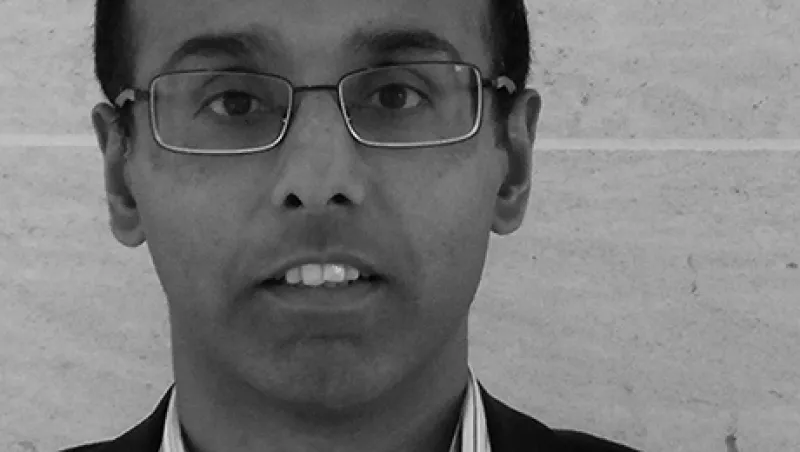Chetan Ghosh arrived at Centrica’s pension investment office in the wake of the global financial crisis, in September 2009, when he was hired to eventually replace then-CIO John Clark. Although that was Ghosh’s first foray into pension investment management, he had worked in a variety of related roles, ranging from pensions actuary at Towers Perrin to investment consultant at Aon Hewitt and Lane Clark & Peacock. He also did a stint at financial services firm Alexander Forbes, where he developed a fiduciary management offering to improve client governance structures.
Based in the London suburb of Windsor, Ghosh, 40, has overseen a number of changes in both fund governance and asset allocation during his tenure, which has included the title of CIO since 2012, when Clark became chairman of the investment committee. Ghosh’s efforts helped the now-£6.5 billion ($9.6 billion) Combined Common Investment Fund, which supports three separate retirement schemes at Centrica, attain an annualized performance of 14.0 percent for the five years ended December 31. Recipient of Institutional Investor’s European Investment Management Award for U.K. Corporate pensions (see “At Centrica, Chetan Ghosh Balances Liability Matching and Returns”), Ghosh recently spoke with Senior Writer Frances Denmark to review the highlights of his more than half decade at Centrica.
Institutional Investor: What are the key differences between your consulting and investment chief roles?
Ghosh: There are many facets of the consultancy skill set that were directly transferable to my role as a strategic CIO. The asset management experience that I obtained at my previous role was also of paramount importance, as it provided the required insight of buying assets at the right price. At a practical level, I find a key difference between the in-house and consulting roles being the degree of personal ownership of getting decisions made. As a consultant, you could tolerate some decision paralysis at the clients’ end, as you had done your job of advising, whereas my current role requires me to break down any blockages in getting decisions made. A subtle but very important difference.
How do you justify having half of the pension assets in fixed income?
It reflects a few ideas. First, we put a large allocation to investment-grade credit on the back of the market environment in the credit crunch. So there was an outsize return for the risk involved with investment-grade corporate bonds.
Second, within the U.K. there is a kind of regime pressure to hold government bonds because of how pension liabilities are marked to market using government-bond-related discount rates. Government bonds provide a level of risk control even if they’re not attractively priced. The typical U.K. scheme that’s more mature than ours will hold even higher proportions in government bonds than we do.
And then I think the final piece for us is there are still interesting areas within the credit spectrum that can give decent risk-adjusted returns. So we have allocations to private debt and allocations to senior loans where we think you’re getting either adequately or overcompensated for the risk that you’re taking on. As our investment-grade corporate bond portfolio has been doing well, we’ve been starting to rotate some of the exposures, selling into profit.
You have only 1 percent allocated to a risk parity strategy. Can such a small portfolio be meaningful?
We have an intellectual belief in the concept, so that’s one element of our decision making. However, to implement it in the current market environment means having a levered exposure to government bonds at low bond yields. And from a valuation point of view, we’ve not wanted to make a full allocation to it. So what we thought would be sensible is to get live exposure to make sure there’s nothing untoward in the reality relative to the theory. And then as and when we think there is a better time to increase exposure, we can then do so, having given it some live testing.
Why have you excluded hedge funds from the portfolio?
Some of our specialist managers will turn up in hedge fund indices. But these are all long-only investments that have a beta return associated with them, so we don’t see them as hedge funds. What we classify as hedge funds are people who are trying to generate return out of nothing, just purely using their skill. We think that is very difficult. There’s no underlying market return that is giving them a tailwind. We don’t think there are many managers generating return based purely on skill. And if it is prevalent, you’re overpaying.
You’re in good company, as lately some of the biggest pension funds are divesting from hedge funds. But doesn’t having fewer investors help those who remain?
I think that’s right, because there’s only a finite level of skill, and that finite level of skill can only manage so much money. It will rebalance the amount of money that is being managed by better-skilled managers. At the moment it’s just too much, so they’re not delivering proper, genuine good returns.
The other thing for us is hedge funds don’t offer transparency, even though it’s improved post-credit-crunch. They quite often are asking you to just trust them, trust their return stream, without giving you any granularity in how they go about investing. It’s very difficult for us to take that leap of faith. We want to understand investment theses and investment rationale. If we don’t get information to allow us to do that, then we’re happy to just walk away.
How has fund governance changed since you came to Centrica?
We’ve been attacking the governance from many angles. Increasing the investment team from one to five has been a really important evolution in our journey. Increasing the in-house resource means we’re no longer reliant on our investment adviser. We’ve built up a relationship network with the whole of the industry so that we can take intellectual capital from any type of financial firm. That’s been really important.
We also wanted to move to an approach where most of the investment decisions were being taken by an investment committee who are financially literate and comfortable in making investment decisions. In the old structure the investment committee might form views that were then taken back to the trustees, who gave the final agreement. And what we were finding was that approach was suboptimal because it suffered from decision paralysis, because the trustees didn’t feel knowledgeable enough to take those investment decisions. The way we cured that was to ask the trustees to just set headline objectives on what pots of money do you want to target and when do you want to get there? What would be too painful a result in terms of the downside event? And then give that to the investment committee as parameters, and they will construct the asset allocation in accordance with those. We also strengthened our investment committee by bringing two additional external people on board, so we moved from one to three external investment experts that sit on that board.
What is one of your current priority projects?
For the past 18 months, we’ve been building a valuation framework that seeks to deploy capital. We make a forecast on future asset returns, and we compare that against what we think we should be getting paid for each asset class compared to the risks that are involved in that asset class. It forces us into a discipline of only deploying capital where we think we’re going to get adequately compensated.
Follow Frances Denmark on Twitter at @francesdenmark. Visit her blog, “Inside Edge.”






